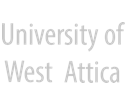The modern urban landscape as a landscape of visualized messages
Abstract
The modern image of the city is defined by the quality and quantity of redundant and ephemeral projections of multiple messages that surround space. In the past decades, the correlation among individual elements of urban space went through a radical change due to the amassing of a multitude of mostly commercial messages, without prior study and design. This change appears to develop only on the surface; however, it evolves from a physiognomic transformation into an actual transubstantiation, since the articulations of these messages appeal to the human community and have a critical cultural impact. The change is a determinant of how the city is experienced and evaluated. In our opinion, it leads to a social transformation, because as a spatial cover it carries, projects and communicates emphatic concepts, discrete values, specific objectives and explicit or implicit intentions. Through its elements, the image of the city provides a reliable indicator of the residents’ culture, an expression of their daily life. Its external elements-urban characteristics, stemming from the social life, are in a reciprocal relationship with this image. The social identity of advertising messages as a phenomenon, from its emergence to the present, is determined by the adaptation of spatial organization to the input and structure of the phenomenon. From all the expressions of communication in public space, the function that dominates modern cities is that of advertising.
Keywords
DOI: 10.26265/e-jst.v11i3.3108
Refbacks
- There are currently no refbacks.






